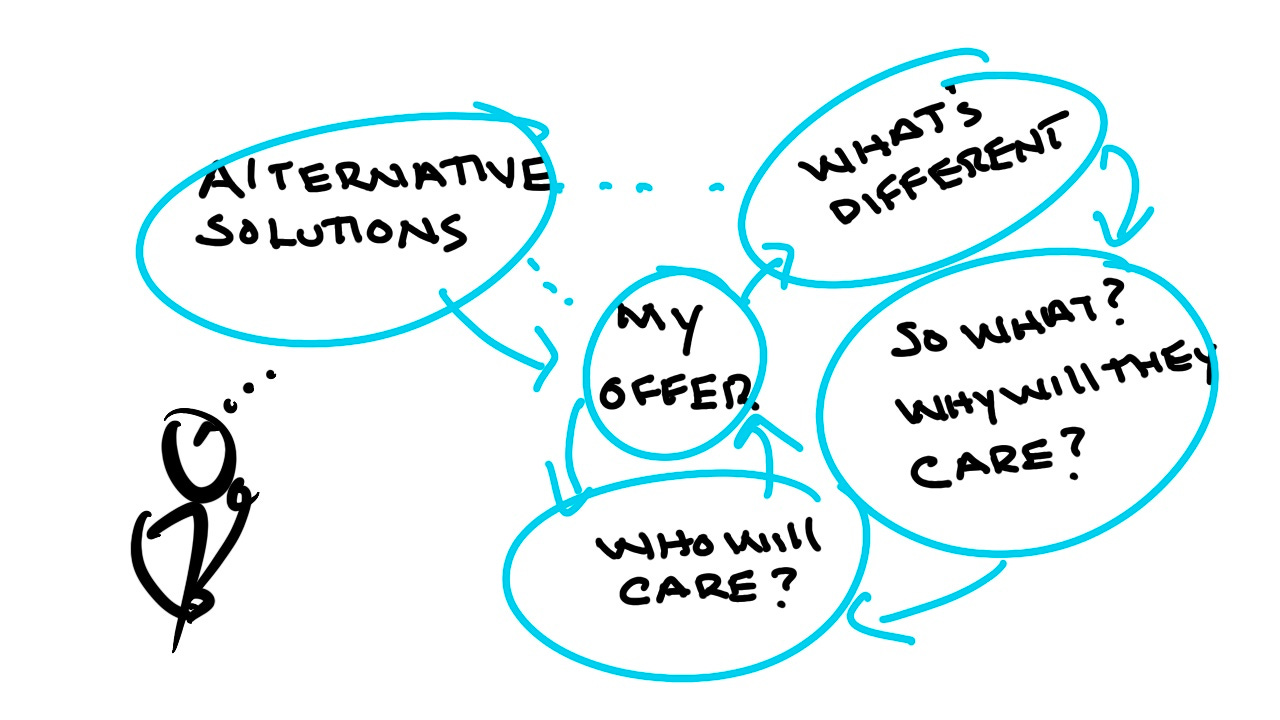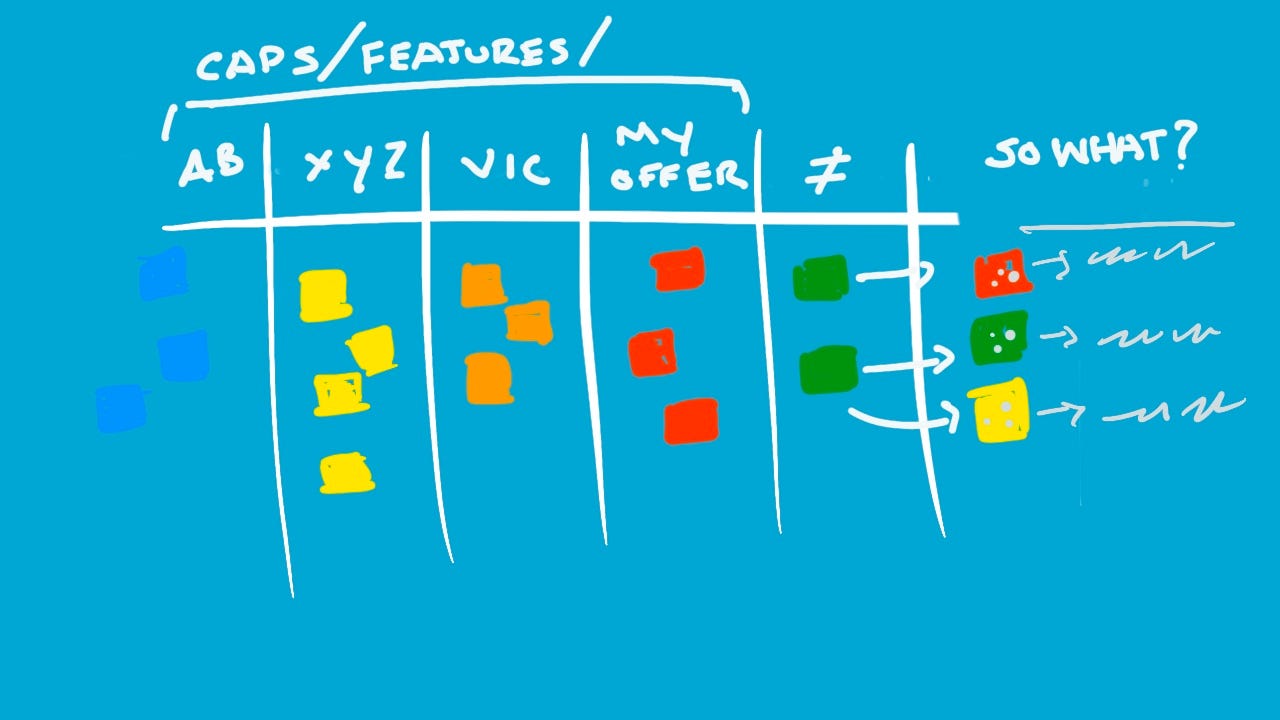The Lazy Way to Visualize Your Value Proposition (using the genius in the room).
Each successful product, service, and company has a position that makes it stand out (unless you’re competing as a low-cost alternative).
You've probably been asked, "What’s your value proposition?" or heard advice that you need to work on your positioning. This is not just a suggestion; it's a call to strategic action.
Value proposition and positioning are your compass in a sea of sameness, guiding you to a clear distinction from the rest.
Here is the thing. They are the two faces of the same coin. They work together to set a direction and better communicate why it matters for the people you serve or seek to serve.
How I used to do it
During my business school and marketing career, I discovered a practical tool: the position matrix. This tool helps position a product against two critical customer dimensions, for instance, discount/premium and convenience/luxury.
This matrix helps you map out where you stand in a market/product category against your competitors. Let’s say you fall somewhere between luxury and convenience.
It's great that you know where you are on the map. You are a luxury convenience offer. But what makes you different from other luxury convenience offers?
Now, you have to figure out what is unique about you and why will people care. So, you go back to the drawing board and do more research.
I love this matrix, but I saw 3 problems
First, it focuses on a specific market category (great for mature markets). If you are a new venture playing in a new field, you're defined by the past.
Second, the matrix helps you map similar competitors, which is good, but it does not consider alternative solutions. Your alternate solutions answer the question- who do we have to beat?
Third, it’s time and resource-consuming. (I don’t know about you, but I’m on the Tiny Loop bandwagon)
The Lazy Way to Visualize Your Value Proposition
Here's an easy, hands-on way to guide your team through creating a value proposition. You only need a whiteboard, sticky notes, and your team’s input.
Let’s break it down step by step.
Step 1: Set Up the Table
Draw a five-column table on the whiteboard.
Title the first three columns with alternative solutions to your offer. Think: “What would people do if you didn’t exist?”
It could be doing nothing, using a competitor’s product, or even finding another creative workaround.
For example, the alternative to Coke might be tea, and for a CRM, it could be Google Sheets.
The fourth column is your offer. That’s where you’ll list everything you bring to the table.
Step 2: Fill in the Features
Hand out sticky notes to the team and ask them to write down the features and capabilities of each alternative solution and your offer.
One idea per sticky note, please!
Think about what you and the alternatives “do and don’t do”
Stick the notes in the correct columns.
Step 3: Organize the Information
Take a moment to rearrange the sticky notes if needed, making sure everything’s easy to follow.
Now, give the team a few minutes to digest what’s on the board.
Step 4: Find What Makes You Stand Out
Ask the team to answer the question: “How are we different?”
Each answer goes on a sticky note and gets placed on the board.
For each point of differentiation, lead a discussion using these prompts:
“So what?” Ask this three times to get to the core of the value (similar to the 3 Whys technique).
Why do people care about that?
Who will care about this?
Capture the answers and stick them next to each differentiation point.
Step 5: Narrow Down the Key Differentiators
Vote on the top five differentiators. These are the most important things that set you apart and matter to your audience.
Step 6: Define Your Value Proposition
By now, you should have a clear picture of your space in the market and how you can bridge any gaps by aligning what you do and how you do it. This is the foundation of your Value Proposition.
Next Steps:
Write your positioning statement.
Summarize your value in a clear, compelling way.
Test your value propositions.
Get feedback, refine it, and see what resonates with your target audience.
That’s it! A simple visual way (or lazy way) to craft a value proposition that truly highlights what makes you unique.




